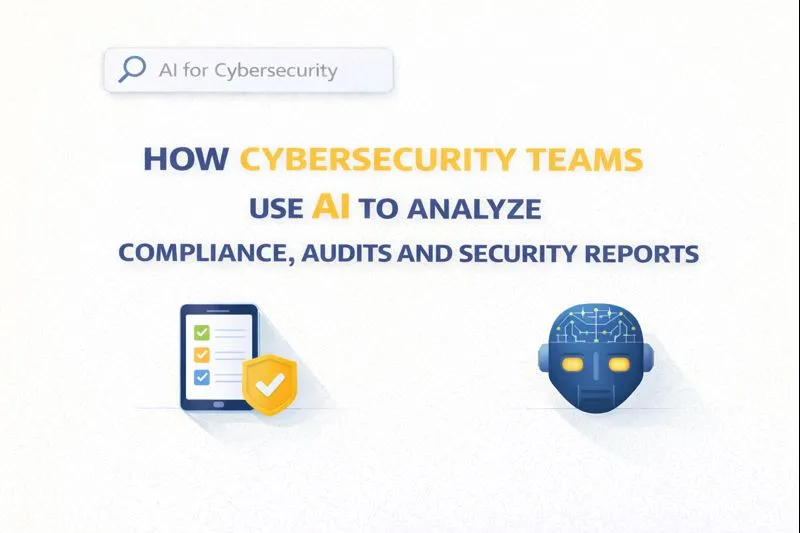What is Growth Hacking? An In-Depth Explanation
TL;DR
Defining Growth Hacking: Beyond Traditional Marketing
Okay, so you wanna know about growth hacking, huh? I remember when it was the buzzword, everyone was throwing it around--like "ai" is now, almost. Is it just marketing with a new name? Not really, but it's easy to see why people get confused.
Growth hacking, it's not some magic formula, but a way of thinking. It's about using data, being super quick, and getting everyone on board.
Data-driven decision-making is paramount. No hunches here. We're talking about analytics, metrics, and figuring out what actually works. Like, a healthcare startup might use data to see which onboarding flow leads to the most patients scheduling appointments. This isn't just about vanity metrics; it's about real, actionable insights. I’ve seen companies live and die by their dashboards.
Focus on rapid experimentation and iteration. Try stuff, see what sticks, and move on. Think of a retail company testing different email subject lines every day to boost open rates. It's about quantity and speed, not perfection. if it does not work, ditch it.
Cross-functional collaboration is essential. The marketing team needs to talk to the engineering team, and sales, and support. A B2B SaaS company, for example, might have their developers tweak the signup process based on feedback from the sales team, streamlining the user experience and boosting conversions.
Customer acquisition and retention are equally important. Getting new users is cool, but keeping them is where the real value is. A finance app might focus on features that encourage users to actively manage their budgets, boosting long-term engagement.
A/B testing and analytics drive optimization. If you're not testing, you're guessing. It's about tweaking every little thing, from button colors to the placement of calls-to-action.
It's not that traditional marketing is bad, it's just… different. So, what makes growth hacking stand out?
Traditional marketing often focuses on brand awareness and long-term campaigns. Growth hacking prioritizes rapid, scalable growth through innovative tactics. Traditional marketing is all about the long game, growth hacking is about NOW.
Traditional marketing can have broader goals. Growth hacking is laser-focused on user acquisition and retention. It’s a laser focus, and often, it relies on low-budget marketing tactics.
Growth hackers often use unconventional channels and automation, while traditional marketing relies on established methods. Think viral loops or using bots to engage potential customers.
To really nail growth hacking, you gotta have the right mindset. It's all about being open to new things and learning from your mistakes.
Embrace a culture of experimentation and continuous learning. Don't be afraid to try weird stuff. Some of the best growth hacks come from ideas that sounded crazy at first.
Be willing to test unconventional ideas and challenge assumptions. The obvious answers aren't always the best ones. Sometimes, you have to zig when everyone else zags.
Quickly adapt to changing market conditions and user behavior. What worked last month might not work today. You gotta be nimble and ready to pivot.
Failure is a learning opportunity; iterate and improve. Not every experiment is gonna be a winner. The key is to learn from the duds and keep moving.
And that's growth hacking in a nutshell. It's not about big budgets or fancy ad campaigns; it's about being smart, creative, and always looking for new ways to grow.
Key Growth Hacking Strategies for B2B SaaS
So, you want some actual strategies for B2B SaaS growth hacking, eh? It's more than just slapping "growth" on some old marketing tricks. It's about finding those specific levers that make a real difference--and sometimes, it's not what you expect.
pSEO, or product-led seo, is all about making your product the star of your seo. It's not just about blog posts (though those help); it's about optimizing product pages and the whole user experience for search engines. The product itself can signal relevance to search engines through its features, user engagement, and how it solves specific problems.
Focus on those product pages. Make 'em sing! Detailed descriptions, clear benefits, customer reviews – all of it. A B2B cybersecurity firm, for example, might create in-depth product pages for each of their ai-powered threat detection tools. Showcasing features, use cases, and integrations.
Content, content, content (that's useful!). It ain't enough to just stuff keywords. Create valuable, informative content that actually helps users solve problems. Like, a human resources software company could publish guides on compliance, employee engagement, or performance management.
Keyword research is still king. You gotta know what people are searching for! Use tools to identify those relevant, long-tail keywords related to your B2B SaaS product. A project management tool, for instance, might target keywords like "agile project planning software" or "scrum workflow automation."
Schema markup? Yes, please. This helps search engines understand exactly what your page is about, boosting visibility.
Speed matters, people. No one likes a slow website. Prioritize user experience and website speed for better search rankings and happier users.
Okay, now we're talkin'. Programmatic seo is where you use data and automation to crank out tons of seo-optimized content. Think of it as ai-powered content generation, but for growth. This often leverages machine learning algorithms to identify content gaps, generate variations of content based on data, and ensure a degree of quality and relevance at scale, going beyond simple template filling.
- Identify those high-potential keywords, and then create templates for landing pages, blog posts – anything that can be automated.
- Use APIs and data feeds to fill those templates with relevant info. For instance, a travel booking saas could use an api to pull in real-time flight prices and generate landing pages for specific routes. Think "New York to London Flights".
- Automate the whole shebang. Content publishing, promotion – get it all out there.
apIs are like little digital Legos, and they can unlock serious growth potential. They facilitate growth by enabling seamless integrations that create network effects, allowing for data-driven personalization that enhances user experience and drives acquisition, and can even power viral loops where users invite others to access integrated features.
- Open up your api. Let developers build integrations with your B2B SaaS product.
- Show off your api. Documentation, tutorials, dev communities – make it easy for people to use.
- Highlight success stories. Showcasing successful api integrations attracts new users and proves value.
Just remember, growth hacking is a mindset. It's all about experimentation, data, and a willingness to try new things.
So, what's next? Well, we've covered some key strategies. Now, it's time to talk about data analytics and how to measure your success... and how not to get lost in the numbers.
Growth Hacking in Cybersecurity: Unique Challenges and Opportunities
So, growth hacking in cybersecurity? Seems like a weird mix, right? I mean, one's about fast growth, the other's about, well, not getting hacked. But hear me out.
The cybersecurity industry has some unique challenges when it comes to growth. It's not like selling the latest gadget. You're selling trust, security, and peace of mind in a world that's constantly changing.
Trust is everything. You can't just promise security; you gotta prove it. That's why things like certifications, compliance reports, and transparent security practices are super important. A company won't buy your threat detection software if they don't think you're legit.
Education is key. Most people—even ceos—don't really understand cybersecurity threats. It's our job to make them care. Think about creating content that explains the real-world impact of ransomware attacks or data breaches in a way that hits home. For example, a cybersecurity firm could create a blog post detailing how a recent data breach at a similar company led to significant financial losses and reputational damage, highlighting the need for proactive security measures.
Compliance is a must. Regulations like hipaa or gdpr heavily influence how cybersecurity firms market their services.
Content marketing is huge in cybersecurity. It's not just about blog posts; it's about building authority and trust.
Focus on solving problems. What are the top cybersecurity pain points for your target audience? Create content that gives real solutions. For instance, a cybersecurity company could offer a guide on how small businesses can protect themselves from common phishing attacks, detailing actionable steps and best practices.
Free resources are bait. Ebooks, white papers, webinars—offer them up! That healthcare startup I mentioned? They could offer a free guide to HIPAA compliance for telehealth providers.
Thought leadership builds trust. Share your expertise through in-depth articles, industry reports, and speaking engagements. Position your company as a thought leader in the space.
Here's where things get interesting. Turn threat intelligence data into leads.
Personalization is power. Use threat data to identify potential leads and tailor your sales pitches. If you know a company was recently targeted by a phishing campaign, offer them a solution to prevent similar attacks.
Offer free threat assessments or vulnerability scans. For example, if threat intelligence indicates a surge in attacks targeting a specific industry, a cybersecurity firm could proactively offer targeted vulnerability scans to companies in that sector, demonstrating their understanding of the risks and their ability to provide solutions.
Share insights about emerging threats. Become the go-to source for cybersecurity news and analysis in your niche.
To illustrate how threat intelligence can be leveraged, consider this flowchart:
It's a different game, but with the right mindset and strategies, growth hacking can be a real asset in the cybersecurity world. Now, let's move on to data analytics - because you can't growth hack without knowing what's working, and what's just a waste of time.
Case Studies: Real-World Examples of Growth Hacking Success
Okay, so we've been yapping about growth hacking, strategies, and cybersecurity... time to get real. What does this stuff look like when the rubber meets the road? I'm not gonna lie, it's not always a smooth ride--you're gonna see some failures along the way.
Let's talk B2B SaaS. You're not selling to consumers, so those flashy social media ads aren't gonna cut it. It's about providing real value and building trust.
- Content is king, but context is queen. I know, I know, you've heard it before. However, the key is to create content that addresses the specific pain points of your target audience. For example, "SaaS Solutions Inc.," a project management tool provider, created a series of in-depth guides on "Agile Project Management Best Practices for Remote Teams." This content directly addressed a major challenge for their target audience, driving organic traffic and generating qualified leads.
- Leverage partnerships and integrations. Don't be an island! Integrate your SaaS product with other tools that your customers are already using. This expands your reach and adds value. For instance, "HealthFlow," an EHR software company, integrated with popular patient scheduling platforms, allowing their users to manage appointments seamlessly and attracting new customers who valued this convenience.
- Personalization is power. Generic emails are a one-way ticket to the spam folder. Use data to tailor your messaging and offer personalized recommendations.
Cybersecurity is a tough nut to crack. You're selling something that people hope they'll never need, but desperately do.
- Education, education, education. Most businesses don't realize how vulnerable they are until it's too late. Create content that educates your audience about the real-world risks and the importance of cybersecurity. For example, "CyberGuard Solutions," a threat detection software provider, launched a campaign featuring short, impactful videos illustrating the devastating financial and operational consequences of a ransomware attack on a hypothetical retail company, making the abstract threat tangible and urgent.
- Free assessments are your best friend. Offer free vulnerability scans or security audits to demonstrate your expertise and identify potential leads. Show them where they're weak, and then offer a solution.
- Community building builds trust. Engage with your audience on social media, participate in industry events, and build a community around your brand.
Okay, let's be real: not everything works. You're gonna have those campaigns that flop, those features that nobody uses.
- Analyze your failures as much as successes. What went wrong? What can you learn? Don't be afraid to admit your mistakes and use them as opportunities to improve. For instance, if a new feature launch resulted in a drop in user engagement, instead of just abandoning it, a growth hacker would dig into why – was it confusing? Did it break something else? This analysis informs the next iteration.
- Don't be afraid to pivot. If something isn't working, ditch it and try something else. The market is constantly changing, so you need to be flexible and adaptable.
Growth hacking is more than just a set of tricks--it's a way of thinking. So, get out there, experiment, and start growing! Just remember to learn from both your wins and your losses.




